
By Rhian Waller, University of Maine, Glacier Bay National Park, AK
March 21, 2016
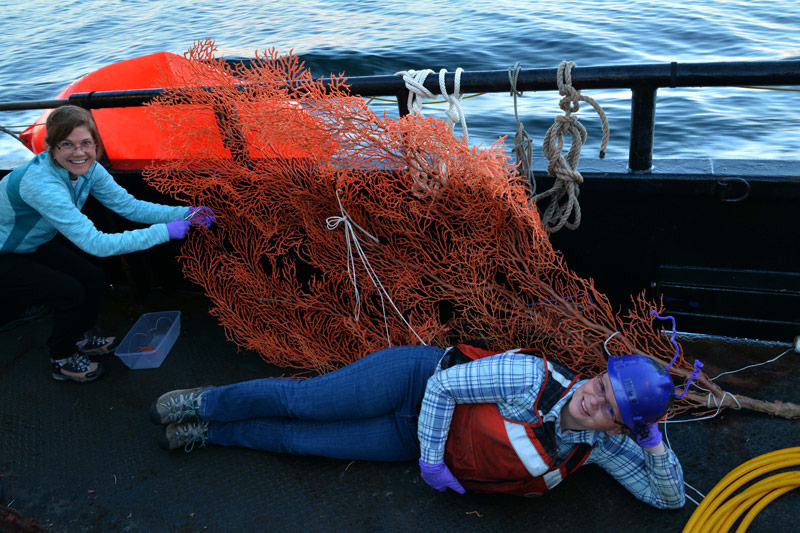
Rhian Waller, 5’3&rduo;, poses next to a colony of Primnoa pacifica for scale, while Cheryl Morrison collects tissue samples for genetic analysis. This colony was collected to determine its age and provide more information about growth rates in Glacier Bay National Park. Samples from this coral will also be used for reproduction and isotope analysis to better understand how these corals are interacting with their environment and how the populations have developed in the bay. Image courtesy of Dann Blackwood, the Deepwater Exploration of Glacier Bay National Park expedition. Download larger version (jpg, 9.1 MB).
As chief scientist I have many jobs on this cruise—cruise planning and logistics, personnel coordinator, site selection, ship interface, safety manager, scuba diver, among many others. There is not often time to sit and stare, but today I did. Glacier Bay National Park captured my heart six years ago, when I came here in 2010 by myself to drop a homemade camera into the fjord and see what lived in the deep. Working with the park scientists they took me out to a few sites around the bay and through grainy black and white video images, we discovered cold-water corals living in the depths of the fjords.
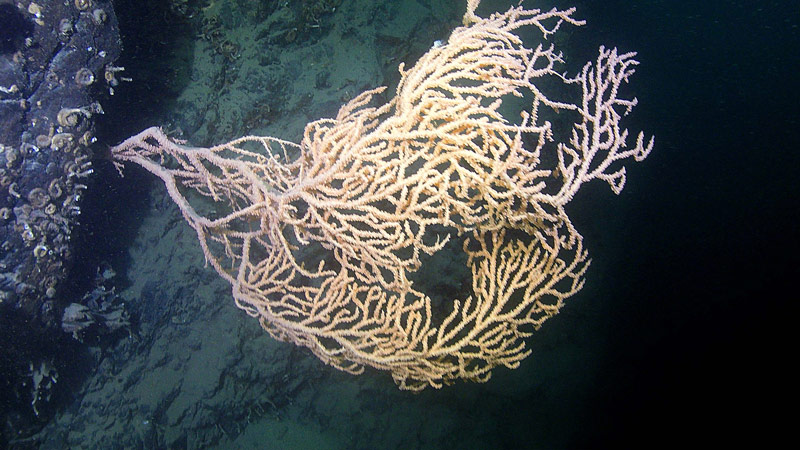
Part of the goal of this project is to investigate the existence of Red Tree Corals in shallow waters that we can reach during scuba dives. Image courtesy of the Deepwater Exploration of Glacier Bay National Park expedition. Download larger version (jpg, 9.1 MB).
Though the allure of cold-water corals sucked me in, the amazing scenery above water made me feel alive. Ten thousand foot high mountains, snow covered at their peaks, glassy blue glaciers, nunatuks, and beautiful woodlands starting tall at the mouth and gradually getting smaller and smaller as you approach the head. It's not hard to understand why the Tlingit settled here, why John Muir named this place as one of his favorites, why it became a National Park, and why so many from around the globe visit this place every year. The breathtaking scenery makes you feel small, like a tiny speck on this amazing planet, and for me, rejuvenates my desire to help protect and preserve places like this.
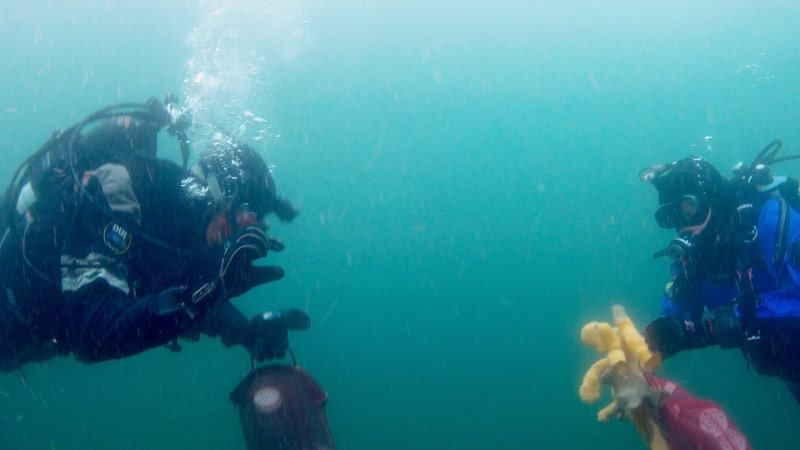
Communicating with your buddy about air consumption and safety is always important during scuba dives, but during a science dive you also need to be able to communicate about what samples to collect and where things stand with the particular objectives of the dive. This becomes even more important during dives where your bottom time is limited based on cold water temperatures and deep depths. Here two members of the dive team, Bob Stone and Rhian Waller, communicate during their safety stop. Both divers are wearing dry suits, gloves, and hoods to protect them from the cold water and carry bags full of samples as they prepare to head back to the boat. Image courtesy of Dann Blackwood, the Deepwater Exploration of Glacier Bay National Park expedition. Download larger version (jpg, 2.4 MB).
To be able to enter Glacier Bay National Park as a scientist is a true privilege, and I am excited this research cruise will contribute to the wider understanding of the underwater habitat in this park. We're on day 4 of this cruise, and already we've discovered and imaged new populations of Red Tree Coral and collected specimens that will contribute to our knowledge of how this important ecosystem has spread to the shallow and inland waters of Southeast Alaska. We've seen two other species of coral, sponges galore, colorful starfish, sea slugs as big as your palm, fish, and numerous other organisms. I even got to see a sea lion up close today underwater. The “little guy” was considerably bigger than myself, circled us a few times to get a good look and decided we were a-okay.
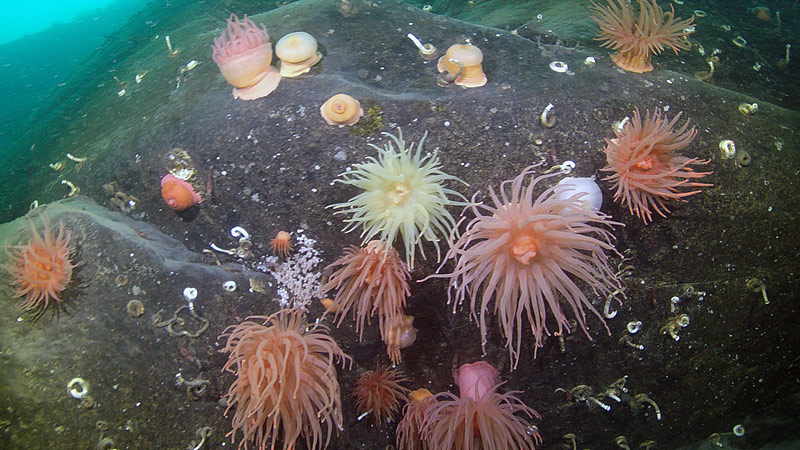
Even in areas where no Red Tree Corals were found during scuba dives, the underwater landscape is beautifully dotted with anemones, stoloniferous octocorals, and serpulid worms. Image courtesy of the Deepwater Exploration of Glacier Bay National Park expedition. Download larger version (jpg, 2.8 MB).
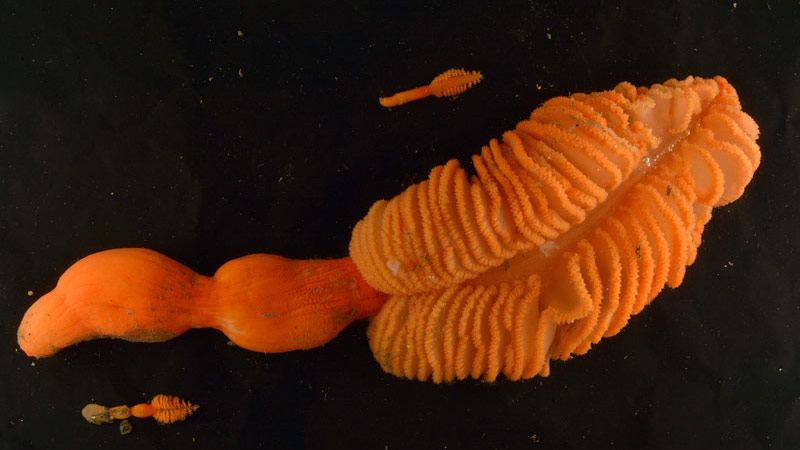
Three sea pens (Ptilosarcus gurneyi) collected during a dive at Blue Mouse Cove. Image courtesy of the Deepwater Exploration of Glacier Bay National Park expedition. Download larger version (jpg, 6.9 MB).